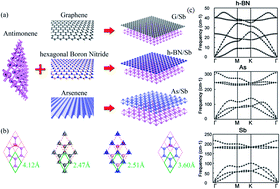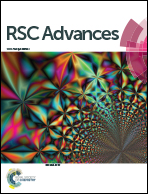Biaxial strain effect on electronic structure tuning in antimonene-based van der Waals heterostructures†
Abstract
By combining antimonene (Sb) with semimetal grapheme (G), semiconductor arsenene (As) and insulator hexagonal boron nitride (h-BN), three new 2D van der Waals (vdW) heterostructures, namely, G/Sb, As/Sb and h-BN/Sb, are designed and discussed. The results indicate that h-BN/Sb and As/Sb heterostructures are semiconductors with 0.14 and 0.31 eV gaps, separately, while G/Sb heterostructure is metallic. In addition, the band gaps of h-BN/Sb and As/Sb can be significantly modulated by the strong interlayer coupling. We also find that biaxial strain can further tune the electronic properties of the 2D As/Sb and h-BN/Sb vdW heterostructures, resulting in the indirect-to-direct gap transition. Very importantly, with biaxial strain, we have achieved continuously controllable band gaps from 1 to 0 eV, corresponding to spectra range of near-infrared (NIR) and mid-infrared (MIR) wavelength, which indicates antimonene-based heterostructures have potential applications in infrared detectors and photoelectric devices.



 Please wait while we load your content...
Please wait while we load your content...